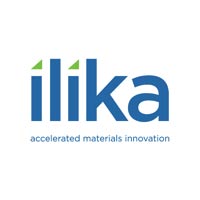Ilika plc (LON:IKA) Chief Executive Officer Graeme Purdy caught up with DirectorsTalk to discuss their collaboration with Johnson Matthey PLC (LON:JMAT)
Q1: Now you announced a collaboration with Johnson Matthey PLC this morning, could you tell us the objective of the collaboration?
A1: Yes, this is the collaboration between Johnson Matthey and also actually two universities, the University of Oxford and the University of Warwick as well as the Williams Grand Prix team and Ilika plc and we collaborating together in order to develop a new type of chemistry for so called lithium sulphur batteries.
Q2: Now JM is better known for its precious metals business, is the battery business a recent development?
A2: Well Johnson Matthey have actually acquired a number of battery related businesses over the last couple of years for instance it bought the battery pack assembly company Axeon which was a British company, it bought some of the assets of A123 Batteries which was a lithium ion phosphate based organisation and actually last year I think they also acquired the battery materials business from Clariant. So they’ve been building quite some activities in this area and as part of that momentum in the sector they’re looking to develop some next generation technologies also including the lithium sulphur activity and I think it’s a very interesting strategic shift for the company as they move away from some of their precious metal based businesses that they’ve historically been better known for.
Q3: So are lithium batteries or lithium sulphur batteries different to the Stereax batteries which you launched in April?
A3: Yes actually, they are very different in the way that they work. The Stereax batteries are like a type of lithium ion battery where we’ve just replaced the organic liquid electrolyte with a thin ceramic and the lithium is actually intercalated in the cathode and the anode so it’s actually absorbed into the crystalline structure of the two electrodes in the battery. With lithium sulphur batteries, actually what happens is that the lithium is dissolved away from the anode and then transported across the battery in a polysulphide chemistry so it’s actually from a material science perspective very different and it gives the properties of the batteries a different outcome as well. Lithium sulphur batteries are particularly light but the polysulphide chemistry is a bit of a challenge because there are quite some side reactions which can occur, which are unwanted, which traditionally has limited the reversibility.
Q4: Does that mean that the uses of lithium sulphur batteries are different to those of Stereax?
A4: Absolutely, so the Stereax batteries are very compact, highly reversible, high power density batteries and really they’re very well suited for Internet of Things, miniature battery applications like the ones that we talk about on our website, powering small devices in the home, in transport applications and in medical devices. The lithium sulphur batteries are really better for large scale applications for instance the storing of renewable energy, you could pair them up with wind power generation or photovoltaic generation and they are a bit bulkier but they’re quite cheap to make on a large scale so they’re very useful for those types of applications.
Q5: So just coming back to the collaboration, what’s Ilika plc’s contribution to the project?
A5: Well of course Ilika has been active in battery materials development for quite some years now, I’d like to think that we’re regarded as the ‘go to’ place for the deployment of high throughput techniques for accelerated materials development in this sector and what Ilika is going to do is we’re going to look at some of the protected anode separator structures that are needed in order to improve the performance of these lithium sulphur batteries. So it’s all about trying to make or minimise the polysulphide shuttle side reactions which can cause problems with these lithium sulphur batteries and if we use the high throughput approach that we’ve got at Ilika we can actually look at all sorts of different combinations of systems that will address this challenge.


